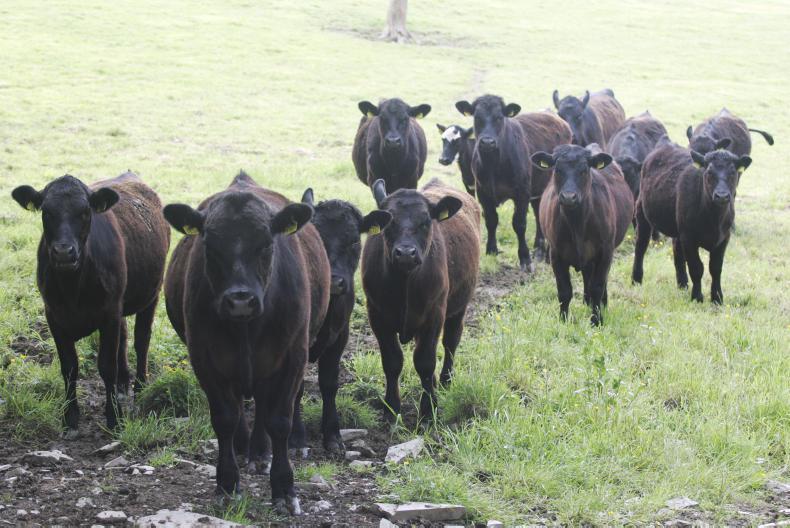At last Thursday’s webinar organised by various NI beef industry organisations, AFBI director Dr Elizabeth Magowan presented a bar chart showing that greenhouse gas emissions from local beef production outstrip all other sectors.
In her chart, total emissions related to beef are rising, are nearly twice that of dairy, and about x7 that of sheep. With the intensive pig and poultry sectors both reasonably confident that they can achieve net carbon emissions in the not too distant future, the impression being created is that if you want to do your bit for the planet, avoid beef at all costs.
Yet the NI suckler herd is at historic lows, and down 9% on 1990, the baseline year used in carbon emissions calculations. So the reason for the increase in beef emissions is actually because of dairy herd expansion, with cow numbers up 13% since 1990.
Outside of milking cows and replacement heifers, it is understood that all emissions related to other dairy-bred cattle are lumped into the beef figure.
The logic behind doing that is sound given that dairy provides an important source of cattle for beef finishers, but at the same time there is a positive story around sucklers that doesn’t often get told.
Although cow numbers are down, sucklers remain the backbone of NI beef production. The average suckler herd is 17 cows and only 131 herds in NI have more than 100 cows.
Over three quarters are kept on less favoured area land, and in herds maintained across low input, extensive, high welfare systems. Any issues NI has with ammonia emissions or water quality in lakes and rivers cannot be pinned on the sector. If anything it has made a positive contribution to managing our environment over the last 50 years.
All farmers, especially those with cattle, must now focus on reducing greenhouse gas emissions per unit of output, but the suckler story shows there is more to sustainability than just that.
Read more
Livestock number cut is ‘very likely’, says scientist
Brazil to add 24m cattle as Ireland plans to cut herd
At last Thursday’s webinar organised by various NI beef industry organisations, AFBI director Dr Elizabeth Magowan presented a bar chart showing that greenhouse gas emissions from local beef production outstrip all other sectors.
In her chart, total emissions related to beef are rising, are nearly twice that of dairy, and about x7 that of sheep. With the intensive pig and poultry sectors both reasonably confident that they can achieve net carbon emissions in the not too distant future, the impression being created is that if you want to do your bit for the planet, avoid beef at all costs.
Yet the NI suckler herd is at historic lows, and down 9% on 1990, the baseline year used in carbon emissions calculations. So the reason for the increase in beef emissions is actually because of dairy herd expansion, with cow numbers up 13% since 1990.
Outside of milking cows and replacement heifers, it is understood that all emissions related to other dairy-bred cattle are lumped into the beef figure.
The logic behind doing that is sound given that dairy provides an important source of cattle for beef finishers, but at the same time there is a positive story around sucklers that doesn’t often get told.
Although cow numbers are down, sucklers remain the backbone of NI beef production. The average suckler herd is 17 cows and only 131 herds in NI have more than 100 cows.
Over three quarters are kept on less favoured area land, and in herds maintained across low input, extensive, high welfare systems. Any issues NI has with ammonia emissions or water quality in lakes and rivers cannot be pinned on the sector. If anything it has made a positive contribution to managing our environment over the last 50 years.
All farmers, especially those with cattle, must now focus on reducing greenhouse gas emissions per unit of output, but the suckler story shows there is more to sustainability than just that.
Read more
Livestock number cut is ‘very likely’, says scientist
Brazil to add 24m cattle as Ireland plans to cut herd






 This is a subscriber-only article
This is a subscriber-only article











SHARING OPTIONS: